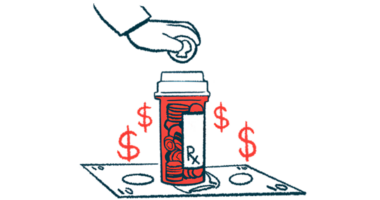It’s time for Parkinson’s research to move out of the slow lane
Waiting isn't harmless when living with a progressive disease

If you’ve ever had the pleasure of visiting your local Department of Motor Vehicles (DMV), you’ll understand the following metaphor. You walk in with the faint hope of progress. Maybe today will be different. Maybe the line will be short. Maybe the system will work. Maybe, finally, someone will call your number.
Now imagine living with Parkinson’s disease.
We patients are given a number, too — except ours starts with the date of diagnosis. And once you’re in the system, the waiting begins. Not just for symptoms to worsen or medications to help, but for real innovation. For change. For something new in the treatment landscape that doesn’t feel like a hand-me-down from the 1990s.
I was diagnosed five years ago. That’s five years of waiting in a neurological DMV, while the line in front of me barely moves.
The gold standard, stuck in time
The last major advancement in Parkinson’s medication? Levodopa in 1967.
The last major advancement in Parkinson’s surgical therapy? Deep brain stimulation in 1987.
Both are considered “gold standards” — a phrase that implies excellence. But in tech, if your standard was created in 1967 or 1987, you’d be laughed out of the room. Imagine using a rotary phone to check your email.
And yet, for Parkinson’s, that’s where we are. Research and development cycles stretch decades. From idea to trial to approval, it could take 20 years, if you’re lucky. Meanwhile, patients and families are forced to make do, stuck with side-effect management and symptom-juggling while we fundraise for “awareness.”
Awareness is not enough. We’re already painfully aware.
Clinic-bound and cut off
Many therapies are clinic-bound, meaning they require an in-person visit to a center with specialized equipment. That’s like having to return to the DMV every week just to keep driving.
As patients, we have limited access, limited control, and minimal participation in shaping the therapies we use. Everything is done to us, not with us. We are not co-pilots in our own care — we’re passengers. Sometimes, we’re luggage.
My neurologist — an insightful and well-intentioned doctor — calls this “tedious and often stuck-in-the-mud academic medicine.” She’s not wrong. The system prides itself on being slow, deliberate, and skeptical. That’s fine for publishing a peer-reviewed paper. But when you’re trying to live with a progressive disease? The slow lane is a death sentence.
The DMV mentality
Let’s go back to that DMV analogy.
You sit and wait for your number to be called. You fill out forms you’ve already filled out. The rules keep changing. You forgot to bring the one piece of documentation they now require. No, they can’t help you today. Try again next month.
It’s not the fault of the people behind the desk. They’re following procedures. They’re doing their best within a flawed system.
Same with many researchers, doctors, and foundations. They care. But the process itself — the ecosystem we’ve built — is adversarial to speed. It prioritizes control over curiosity. Caution over creativity. Safety over urgency. I understand the reasons, but I also understand the consequences.
Because when you’re living with Parkinson’s, the waiting is not harmless.
Accelerating the feedback loop
So what’s the alternative? How do we stop waiting for our number to be called and start building a better system?
We need to accelerate the feedback loop between patient experience and therapeutic innovation.
That means:
- Creating platforms for real-time, real-world data collection, not just clinic snapshots.
- Supporting general wellness products that don’t require U.S. Food and Drug Administration bottlenecks just to get started.
- Opening the door to multisensory, at-home therapies — not just more pills.
- Partnering with engineers, technologists, and designers — not just pharmaceutical giants.
- Funding experiments, not just endpoints.
We need to treat Parkinson’s research and development like a startup, not a government agency. Fast iterations. Continuous testing. Human-centered design.
The DMV doesn’t work because it assumes one size fits all. Parkinson’s care doesn’t work because it assumes one path fits all. But no two patients are the same. No two nervous systems respond identically.
The brain is dynamic. So must be the system that treats it.
Final thoughts from the waiting room
So here I am, five years in. Waiting. Watching. Still hopeful.
But increasingly, I’m not just waiting — I’m building. Like others in the patient community, I’m working with engineers and advocates to push forward new ideas: wearable devices, visual-audio-haptic interfaces, multisensory patterning, direct-to-patient systems, faster loops.
It’s not easy. But it’s necessary.
Because people with Parkinson’s are not static. We are not research subjects. We are dynamic, creative, capable human beings. And we are tired of waiting for our number to be called.
Let’s modernize the system. Let’s get out of line. Let’s create the future — before the next 20-year cycle begins.
Note: Parkinson’s News Today is strictly a news and information website about the disease. It does not provide medical advice, diagnosis, or treatment. This content is not intended to be a substitute for professional medical advice, diagnosis, or treatment. Always seek the advice of your physician or another qualified health provider with any questions you may have regarding a medical condition. Never disregard professional medical advice or delay in seeking it because of something you have read on this website. The opinions expressed in this column are not those of Parkinson’s News Today or its parent company, Bionews, and are intended to spark discussion about issues pertaining to Parkinson’s disease.








Joel Goodsen
Fully agree, and there's another huge problem with drug trials that ARE taking place: age cutoffs.
Here we have a disease that afflicts mostly older people; and yet those people are excluded from trials that might help them, without regard to their actual physical and mental condition. My dad is in his early '80s but quite healthy and cognitively strong... but he can't participate in any studies that I've seen. NOT ONE. They all cut people off at 80. It's infuriating.
Doc Irish
Joel—totally hear you. Age cutoffs that exclude healthy, cognitively strong older adults make little sense and slow learning for the very group most affected. In parallel to drug trials, I’m working on non-drug, multi-sensory training aimed at practical function. I emailed you a short Brain Storm summary as an FYI. Grateful for your voice here. —Doc Irish
Alexa Barr
Oh I could not agree more. Additionally in our early stages are told the best way to manages this insidious diseases is targeted exercise, but the cost of movement disorder specialists is not covered by Medicare or health insurance.
Doc Irish
Alexa—amen. It’s frustrating to be told “exercise is key” while access to movement-disorder expertise isn’t covered. Coverage gaps slow care for people who are trying to do everything right. In parallel, I’m working on non-drug, multi-sensory training aimed at practical function. I emailed you a brief Brain Storm summary as an FYI. —Doc Irish
Rachel Hewitt
Thank you for your article.
I call my schedule: All Parkinsons. All the Time. Everything I do is intended to slow the progression down so that hopefully I will live to see progress with treatment.
Doc Irish
Rachel—thank you for sharing this. “All Parkinsons. All the Time.” really captures the daily reality and commitment. I’m working in parallel on non-drug, multi-sensory training focused on day-to-day function. I emailed you a brief Brain Storm summary as an FYI. —Doc Irish
JoAnne Rumple
Amen!
Doc Irish
JoAnne—thank you. 🙌 I’m working in parallel on non-drug, multi-sensory training aimed at practical, day-to-day function. I emailed you a brief Brain Storm summary as an FYI. —Doc Irish
NIcholas Coldrick
Amen. Fantastic article Doc, as always!
Bill Fitzpatrick
I couldn't agree more. The current system is way, way to slow. There are good people with good intentions working on a cure, but no one seems to have a sense of urgency. I understand that Doctors do not want to cause any harm but being over cautious stifles progress. People with the disease are not worried about long term effects of the disease. They are on the clock now. Michael J Foxx and his organization have done a remarkable job raising money, but 50 years since the last major discovery is not very good progress. We need to change the model to take more risk for those with the disease.
Doc Irish
Bill—thank you for saying this so clearly. The urgency is real, and people living with PD shouldn’t have to wait on an over-cautious system. In parallel with drug development, I’m working on non-drug, multi-sensory training aimed at practical function now. I emailed you a brief Brain Storm summary as an FYI. —Doc Irish
Lance keller
https://www.rightbrainbio.com/ You’re probably aware of this guy - to me the concept is pretty exciting but I’m too old to get into the phase 2 trial if and when it gets funded.
Doc Irish
Lance—thanks for sharing that link. The concept is exciting, and I hear you on age cutoffs shutting people out. In parallel with drug trials, I’m working on non-drug, multi-sensory training aimed at practical function. I emailed you a brief Brain Storm summary as an FYI. —Doc Irish
Mike P.
Doc Irish is so right about PD stuck in the slow lane. I feel a little bad about complaining. I’m 75, most of my childhood friends are dead from accident or disease but I’m still getting around and I try to live every day. There is PD research going on all around the world. Would it benefit from some kind of centralized management, direction, focus?
Doc Irish
Mike—thank you for this honest note. Your perspective matters. I agree that a different structure—common models, open data, and faster cross-team learning—could help move things out of the slow lane. In parallel, I’m working on non-drug, multi-sensory training aimed at day-to-day function. I emailed you a brief Brain Storm summary as an FYI. —Doc Irish
Paula Fournier
How can we PWP change the system? Should we write to our congress people? To the heads of the research institutes?
Doc Irish
Paula—great question. Yes, advocacy matters—but we don’t have to wait. In parallel, we can build a patient-driven track focused on non-drug, non-invasive, non-FDA brain stimulation (using sensory training) with open protocols, shared measures, and community collaboration to learn faster. I emailed a brief Brain Storm summary as an FYI. —Doc Irish
Len Fox
Here is a perfect example of what we need.
### Jonathan Sackner-Bernstein: A Cardiologist's Quest to Conquer Parkinson's Disease
Dr. Jonathan Sackner-Bernstein is a physician with a distinguished career in cardiology, clinical trials, and regulatory affairs, including roles at the U.S. Food and Drug Administration (FDA) where he earned two Commissioner's Awards, and at the Defense Advanced Research Projects Agency (DARPA) where he contributed to launching the Biological Technologies Office focused on neurotechnology. His expertise in identifying contrarian scientific views—often proven correct over time—has now turned toward Parkinson's disease (PD), a field he entered not through professional obligation, but personal drive.
#### The Motivation: A Friend Named Ivan
Jonathan's journey into PD research began with a close friend, Ivan, whose battle with the disease became his primary motivation. As one of his "favorite people" struggled with PD's debilitating effects on movement, communication, and cognition, Jonathan, as both a doctor and friend, dove into studying the condition to help navigate its challenges and the healthcare system. This personal connection fueled a mission to "conquer" PD, transforming Jonathan from a cardiologist into a leading voice advocating for innovative treatments. Ivan's experience highlighted the urgent need for breakthroughs beyond symptom management, inspiring Jonathan to challenge long-held assumptions in the field.
#### Challenging the Dopamine Paradigm
For decades, the standard understanding of PD has centered on dopamine deficiency: the loss of dopaminergic neurons in the brain leads to motor symptoms, treated primarily with dopamine-replacement therapies like levodopa. Jonathan's research upended this by revealing that PD neurons often produce near-normal dopamine levels even in advance stages, but they fail to protect themselves from its toxicity. Excess dopamine exposure, he argues, contributes to neuronal dysfunction and death, affecting mitochondrial and lysosomal function, and triggering apoptosis (programmed cell death).
Drawing parallels to his cardiology work—where beta-blockers counter toxic norepinephrine in heart failure—Jonathan proposed reducing dopamine synthesis as a protective strategy. This "contrarian" approach, supported by data from 10 laboratory models of PD, suggests that lowering dopamine could reverse pathology and improve function, rather than merely masking symptoms.
#### The Potential "Silver Bullet": RB-190 and Beyond
Jonathan identified alpha-methyl-p-tyrosine (AMPT), a drug approved since 1979 for a rare cancer-related condition, as a candidate for repurposing. AMPT inhibits tyrosine hydroxylase (TH), the enzyme that limits dopamine production, effectively blocking excess synthesis in neurons. Preclinical studies in animal and cell models, including those mimicking sporadic PD and genetic variants (e.g., LRRK2, DJ-1), showed AMPT protecting dopaminergic neurons and providing "proof of principle."
Now rebranded as RB-190 under his company Right Brain Bio, the drug is poised for Phase 2 clinical trials, with potential data available within six months of launch. Jonathan has filed a Method of Use patent, developed manufacturing processes, and designed trial protocols leveraging the FDA's 505(b)(2) pathway for repurposed drugs, aiming for three years of market exclusivity. Early trials will target mildly impaired, early-stage patients not on dopaminergic therapy, with considerations for broader applications, including cognitive symptoms like dementia (though these remain less understood).
#### Public Engagement and Optimism
Jonathan shares his optimism through presentations, such as his June 2024 talk hosted by No Silver Bullet 4PD, titled "Why I am optimistic that we might now have a Silver Bullet for PD." In this 90-minute session followed by Q&A, he detailed his findings, addressing questions on trial design, side effects of dopamine agonists, and the therapy's potential for diverse PD cases. He maintains a blog for updates and collaborates with experts like Prof. Roger Barker and Dr. Lorraine Kalia.
As of September 2025, Jonathan's work represents the bold, out-of-the-box thinking called for in this article on accelerating PD research. His story—from personal motivation through Ivan to potential disease-modifying therapy—exemplifies how individual drive can propel scientific progress. For those interested in supporting or learning more, visit his blog at parkinsonsdisease.blog or contact via rightbrainbio.com.
Susan Kyhl
I am sure if all the scientists got together we could solve the problem with the disease and stop it. It’s not a question of money. Michael J. Fox has spent millions, bless him, to no avail. Look how quickly Covid was solved. So what is going on? I see Dr Sackner Bernstein has got some Interesting ideas. Let’s hope he has some luck. It’s all so devastatingly slow for those of us with the progressive disease. Is there anything we can do to help? Good luck everyone. Thanks
Doc Irish
Susan—thank you for saying this out loud. The contrast with COVID speed is painful, and the need for coordination is real. In parallel with the drug pipeline, I’m working on a patient-driven track using non-drug, non-invasive sensory training to learn faster in the open. I’ll email you a brief Brain Storm summary as an FYI. —Doc Irish
Mike
Hey Doc,
I just Praise Jesus for being the ultimate Physician. 2 years ago I had just gotten a mobility chair and I was learning how to operate it without falling out. I had had my diagnosis shifted from Parkinsonism to the more fatal P.S.P. The truth is I was sort of hopeless. I was still engaged in all my more traditional approaches.
I also as doing Accupuncture weekly and using the probiotic NeuralliMP by Bened Life. On 12/2023 my diagnosis was shifted and my Med. were changed. Finally. Completed in 3/2024. The Jesus took control the Holy Spirit came alive in me.Since about 5/2024 I have begun working my butt off 2.5 to 3 hours daily I do stretching,weights,Jacuzzi , treadmill. And other movement
Things. My life has changed Doc. I no longer wait for awful consequence's but challenge my self working toward a solution. On 8/1/2025 We added Neuralli Mood the Probiotc by Bened life to my med regime. And Appealed for More Accupuncture sessions.
I feel so Blessed. Still I wake up Stiffer than Crap. My sleeping can be a challenge but with Neuralli (both kinds) Accupuncture and weekly tortureest Tai Chi with a trainer I can work it One day at a time with. Today with the Lord by my side I have hope of a Great Future.